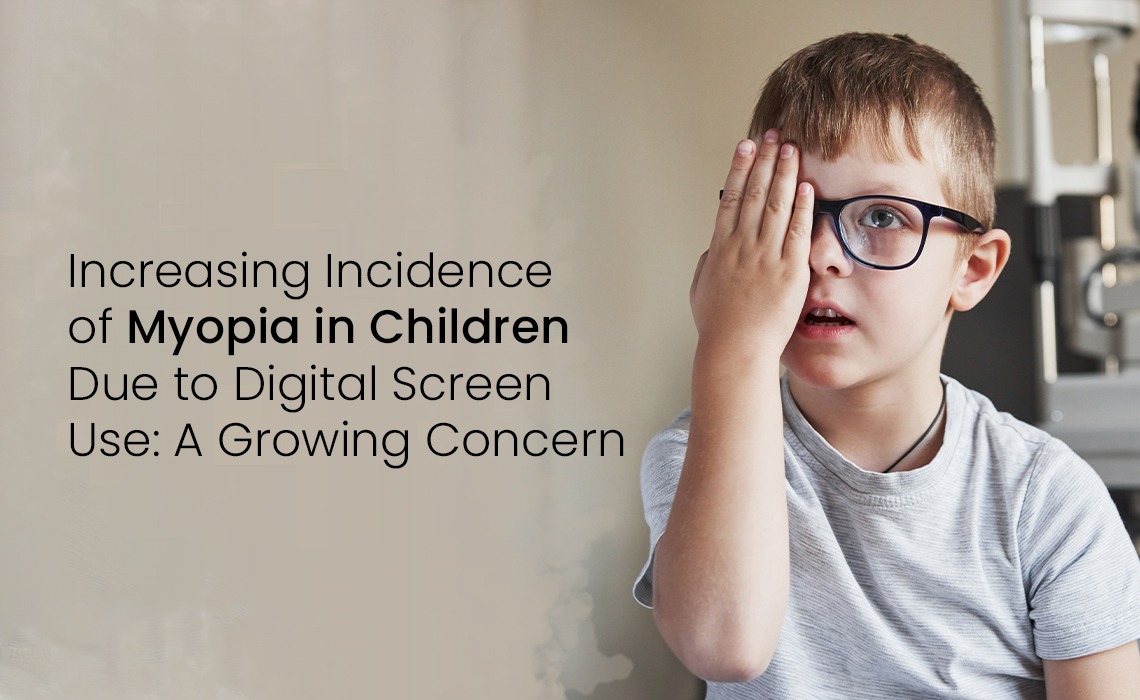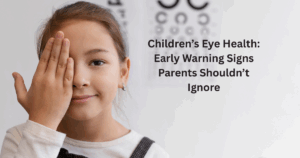In recent years, the global prevalence of myopia (nearsightedness) has been on a steady rise, particularly among children. This alarming trend is increasingly linked to prolonged exposure to digital screens and reduced time spent outdoors. As parents and educators, it’s crucial to understand this issue and take proactive steps to protect children’s vision.
What Is Myopia?
Myopia is a refractive error in which distant objects appear blurry while close objects remain clear. It occurs when the eyeball grows too long or when the cornea is too curved, causing light to focus in front of the retina instead of directly on it. While myopia can be corrected with glasses, contact lenses, or refractive surgery, severe cases may lead to complications like retinal detachment, glaucoma, or cataracts later in life.
The Role of Digital Screens
The widespread use of smartphones, tablets, computers, and televisions has drastically changed how children spend their time. Here’s how excessive screen use contributes to myopia:
1.Increased Near Work Activities: Staring at screens for extended periods demands intense focus on close objects, which strains the eye muscles and increases the risk of myopia.
2.Reduced Outdoor Time: Children spending more time indoors with screens are exposed to less natural sunlight, which plays a protective role in eye health.
3.Screen Glare and Blue Light: Prolonged exposure to screen glare and blue light emitted by digital devices can lead to digital eye strain, exacerbating myopia progression.
Statistics Highlighting the Concern
•According to the World Health Organization (WHO), myopia affects nearly 30% of the world’s population, with predictions that this number will rise to 50% by 2050.
•A study in urban areas has shown that up to 80% of school-aged children are developing myopia, partly due to lifestyle changes driven by technology.
Why Outdoor Time Matters
Natural daylight exposure is essential for healthy eye development. Research suggests that spending at least 2 hours a day outdoors significantly reduces the risk of myopia. The bright light outdoors helps regulate eye growth, preventing the elongation of the eyeball, a key factor in myopia development.
Steps to Protect Your Child’s Vision
1.Limit Screen Time: Follow the 20-20-20 rule—every 20 minutes, take a 20-second break to look at something 20 feet away.
2.Encourage Outdoor Play: Ensure children spend at least 1–2 hours outdoors daily.
3.Create Eye-Friendly Workspaces: Set up study areas with proper lighting and ensure screens are positioned at least an arm’s length away.
4.Regular Eye Check-ups: Schedule annual eye examinations to detect and manage vision issues early.
5.Use Blue Light Filters: Equip digital devices with blue light filters or encourage the use of glasses with blue light-blocking lenses.
The Role of Parents and Educators
Parents and educators play a pivotal role in safeguarding children’s vision. By creating balanced routines that prioritize outdoor activities and limit screen use, we can combat the rising incidence of myopia and ensure healthier futures for our children.
Conclusion
The increasing prevalence of myopia among children is a wake-up call for all of us. While technology brings undeniable benefits, its overuse comes at a cost to our children’s vision. By promoting healthy screen habits and encouraging outdoor activities, we can help mitigate this growing issue. Let’s act now to preserve their eyesight and ensure a bright future—literally and figuratively.
If you’re concerned about your child’s vision, schedule an eye check-up at Tandon Eye Hospital today. Our expert team is here to provide personalized care and advice to protect your family’s eye health.








